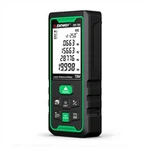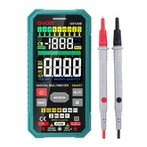Why can't a multimeter measure the polarity of AC current?
The so-called alternating current refers to the fact that its polarity changes alternately, and the speed of change is very fast. Whether it is a pointer type or a more advanced general digital multimeter, it cannot reflect its instantaneous polarity. Its polarity changes the number of times per unit time, which is called frequency. Its unit is Hertz, which is named in honor of the famous physicist Mr. Hertz. Due to the alternating polarity of this power supply, it is impossible to measure its polarity with a general multimeter. If it is necessary to understand the polarity at a certain moment, it can be said that the simplest method for instantaneous polarity is to use an electronic instrument oscilloscope specifically for observing AC or DC pulses.
The direction of alternating current changes at any time, regardless of polarity. If you want to measure the live wire and neutral wire, you can set the multimeter to the highest AC voltage level, hold the black probe with one hand, and use the red probe to detect the wire. If the pointer is deflected, it is the live wire, and if it is not deflected, it is the neutral wire. In addition, some digital multimeters now come with a verification pen function.
AC power is a current that periodically changes in size and direction, without polarity, only frequency. In China, the frequency of AC power is 50 hertz, which means that the current changes back and forth 50 times per second and the direction changes 100 times. This problem itself is problematic.
Which gear is usually set for a diode multimeter
The diode symbol in a digital multimeter indicates the diode mode. The buzzer mode is used to measure on/off, and generally the diode mode and buzzer mode are combined. There are also separate modes
This gear can be used to measure the forward conduction voltage of a diode and infer its quality. When measuring, the red probe must be placed at the positive terminal of the diode and the black probe at the negative terminal of the diode. A good silicon diode has a forward voltage of about 0.5-0.7 volts, while most ordinary light-emitting diodes have a forward voltage of 1.7 volts.
The diode mode of a multimeter is used to measure diodes. A pointer multimeter generally does not have a diode range. In the past, when pointer meters were used, the diode was measured in the resistance range, and then the LV scale was used to read the forward voltage of the diode. At the same time, the LI scale could also be used to read the forward current of the diode at that time. Silicon diodes will be around 0.6-0.7V, germanium diodes will be around 0.2-0.3V, and Schottky diodes will be around 0.2V.






